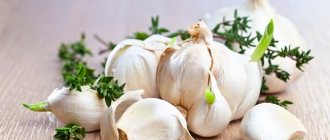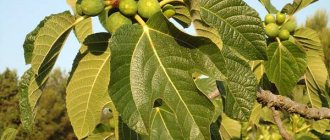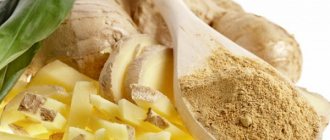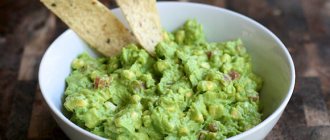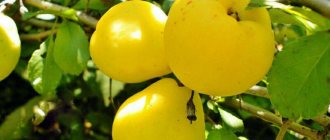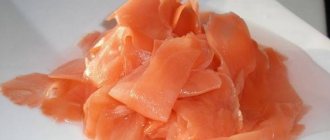Kohlrabi is a biennial plant belonging to the class of cabbage crops. The edible part of the vegetable is a semicircular stalk, from which 3-5 long leaves grow. Because of the characteristic shape of the stem, kohlrabi is popularly called “cabbage turnip.” The plant is classified as a highly nutritious product because it contains many useful substances (easily digestible carbohydrates, vitamins, minerals, enzymes, dietary fiber).
In terms of vitamin C content, cabbage turnips are superior to most cruciferous and citrus crops (including cabbage and lemon). In addition to its high nutritional value, the pulp of the stem fruit has a pleasant sweet-nutty taste. Because of this, the product is actively used in cooking.
General information
The first mentions of kohlrabi were recorded in the 16th century AD. The Romans called the vegetable “caulorapa,” which translated means “stem turnip.” In the old days, kohlrabi was considered a weed crop, which is why it was consumed only by the poor. The plant gained real popularity only in the 17th century, when German peasants began growing the vegetable.
Content:
- General information
- Chemical composition
- Beneficial features
- Features of cultivation
- Use in folk medicine
- Application in cosmetology
- Use in cooking
- Conclusion
The homeland of stem cabbage is the island of Sicily, from where it spread throughout the continent. Today, kohlrabi is grown in almost all countries of Europe, America and Central Asia. In addition, due to its cold-resistant properties, the plant is cultivated in the northern regions of Russia (Sakhalin and Kamchatka).
In appearance, the vegetable resembles a round rutabaga, and in taste, it resembles the core of white cabbage. However, unlike its “brothers”, it has a more juicy sweet pulp containing about 90% water. The diameter of the average kohlrabi stalks is 7-10 cm, and the weight is 200-600 g. The color varies from light green to dark purple.
The vegetable is classified as an early-ripening crop, since its growing season is only 2-2.5 months. In view of this, in one season it is possible to harvest from 2 to 3 cabbage crops. Interestingly, early varieties of kohlrabi are unsuitable for long-term storage (as they have delicate flesh). Later types of cabbage have a denser core, which increases their shelf life.
Root vegetables are stored in the basement, first sprinkled with moistened sand.
How to select and store kohlrabi
The harvest of cabbage is carried out when the fruit stems reach a size of 8–9 cm. To obtain a more tender and tasty pulp, smaller “heads of cabbage” are selected. Over-ripening is accompanied by coarsening of the fruits with a decrease in taste. The harvest is harvested before the first frost.
The best storage conditions for turnip cabbage include a cellar. To ensure that kohlrabi retains its freshness and beneficial properties longer, it is collected without separating the roots and leaving 1.5–2 cm petioles. Washing the fruit is excluded.
As storage containers, boxes or floorings sprinkled with sawdust or sand are used, into which the stem fruits are immersed, leaving the petioles on the surface.
Freshly picked cabbage leaves are kept in the refrigerator in plastic bags. In this form, they retain their taste and beneficial properties for no longer than two to three days.
Chemical composition
Kohlrabi is classified as a dietary product, since 100 g of its pulp contains no more than 44 kcal. However, despite the low calorie content, the vegetable has high nutritional value (due to the content of vitamins, minerals, saccharides, antibacterial substances, dietary fiber, pectins).
The leaves of the cabbage turnip contain 2 times more nutrients than the stem fruit.
Nutritional value of kohlrabi
| Name | Substance content in 100 grams of stem fruit, grams |
| Water | 86,2 |
| Carbohydrates | 7,9 |
| Squirrels | 2,8 |
| Alimentary fiber | 1,7 |
| Ash | 1,2 |
| Fats | 0,1 |
Chemical composition of kohlrabi
| Name | Nutrient content per 100 grams of raw product, milligrams |
| Vitamins | |
| Ascorbic acid (C) | 52 |
| Niacin (PP) | 1,2 |
| Tocopherol (E) | 0,2 |
| Pantothenate (B5) | 0,17 |
| Pyridoxine (B6) | 0,17 |
| Thiamine (B1) | 0,06 |
| Riboflavin (B2) | 0,05 |
| Folate (B9) | 0,018 |
| Beta carotene (A) | 0,008 |
| Macronutrients | |
| Potassium | 370 |
| Phosphorus | 50 |
| Calcium | 46 |
| Magnesium | 30 |
| Sodium | 10 |
| Microelements | |
| Iron | 0,6 |
| Manganese | 0,14 |
| Copper | 0,13 |
| Zinc | 0,03 |
| Selenium | 0,0007 |
Kohlrabi pulp contains natural antioxidants with antitumor and anticarcinogenic activity (sulforaphane, sinegrin, indole-3-carbinol).
Beneficial features
Cabbage turnips, due to their low calorie content and high nutritional value, are successfully used in dietetics.
Beneficial features:
- Accelerates the removal of excess fluid from the body, reduces the likelihood of edema (potassium).
- Improves the condition of the oral cavity (the fibers massage the gums, and the juice provides natural sanitation to the pharynx).
- Normalizes the frequency of muscle and heart contractions (sodium, potassium, magnesium).
- Strengthens the vascular wall, increases the elasticity of veins and arteries, reduces blood viscosity (vitamin C).
- Improves lipid metabolism (fiber and pectin fibers).
- Increases the acidity of gastric juice (organic acids).
- Strengthens intestinal motility, accelerates the elimination of toxic waste (ballast substances).
- Slows down the process of carbohydrate absorption, prevents the development of insulin resistance, and prevents the transformation of saccharides into adipose tissue (tartanic acid).
- Suppresses the growth of pathogenic bacteria that cause stomach ulcers and caries (antibacterial substance sulforaphane).
- Activates natural anti-cancer immunity (indole-3-carbinol and sinegrin).
- Stabilizes blood pressure (magnesium).
- Improves psycho-emotional background (vitamins B and C).
Contraindications to consumption of kohlrabi cabbage (raw):
- peptic ulcer;
- acute form of pancreatitis;
- hyperacid gastritis;
- hypotension;
- individual intolerance.
If flatulence occurs due to the consumption of vegetables, the diet is enriched with spices (dill, fennel, cardamom, cloves). In addition, bacteria (probiotics) are introduced into the daily menu, since gas formation in 90% of cases signals a weakening of the microflora.
Summarize
- Kohlrabi is rich in nutrients that have various beneficial properties.
- It is rich in fiber, which is important for a healthy intestine and proper digestion.
- Plus, its many nutrients and plant compounds support your immune system and may reduce your risk of heart disease, some cancers, and inflammation.
- If you're looking to experiment with new vegetables, kohlrabi is an easy, versatile ingredient to add to your recipes.
The article was prepared by experts for informational purposes only. It should not be used as a guide for treating medical conditions and is not a substitute for professional medical advice, diagnosis, or treatment. In case of illness or any symptoms, you should always consult a doctor and not self-medicate.
Tags: Kohlrabi
About the author: Alexander Fedorov
Candidate of Biological Sciences, biologist, nutrition expert. Graduated from Stavropol State University with a degree in Biology at the Faculty of Biology and Chemistry.
- Related Posts
- Sorrel: beneficial properties and contraindications
- Sweet Potatoes and Potatoes: What's the Difference?
- Sweet potatoes: health benefits and harms
« Previous entry
Features of cultivation
Kohlrabi cabbage is less demanding on growing conditions than other cruciferous plants. In addition, it is resistant to cold and gets along well with vegetable crops. The optimal temperature for its growth is 15-18 degrees. If this indicator drops below +6 degrees (within 5 days), young plants stretch into stems (stems are not formed).
Cabbage turnip prefers slightly acidic and neutral soils (pH 5.5-6.8). In addition, for successful cultivation of the vegetable, it is important to maintain constant soil moisture (due to the shallow root system). With a lack of liquid, the spherical stems become woody and then covered with small cracks.
Kohlrabi is grown both by seedlings and by sowing. To obtain an early harvest (in May), the grains are planted in boxes at the end of February. To collect vegetables in the summer, the seeds are placed in peat cups in mid-April.
To get an autumn harvest, the crop is planted in a greenhouse in early July. After germination, the containers are transferred to a cool place (10-15 degrees). Seedlings are planted in open ground at the stage of 5-6 true leaves (pre-hardened). The duration of seed growth (from sowing to picking) is 35-45 days.
Remember, before planting a cruciferous crop, it is important to thoroughly prepare the soil. To do this, the soil is dug up (without turning the layer), and then nitrogen fertilizers are applied (manure compost is possible).
The best predecessors for kohlrabi are tomatoes, onions, potatoes, pumpkin, legumes and grain (winter) crops. After planting the plants (at a distance of 20 cm from each other), the soil is compacted and watered abundantly.
Late varieties of kohlrabi are sown in open ground (in mid-May). In this case, each grain is placed in a separate hole 2 cm deep. After the appearance of the 2nd leaf, the seedlings are thinned out.
Caring for cabbage comes down to regular watering, loosening the soil and weeding. In addition, the plant is fed with fertilizers twice during the growing season: 2 weeks after planting - with fermented organic matter, and after 20 days with a solution of superphosphate with potassium.
The harvest date is determined by the stalk: if a scratch remains on the “turnip” after rubbing with a fingernail, the stalk is ripe.
What is kohlrabi?
Kohlrabi, also known as German turnip, is a cruciferous vegetable.
Despite its name, kohlrabi is not a root vegetable and does not belong to the turnip family. Instead, it belongs to the plant genus Cabbage and is related to cabbage, broccoli, and cauliflower ().
It has a long leafy stem, which in the aerial part becomes spherical in shape, usually purple, pale green or white. Inside it is always white and yellow ().
The taste and texture of kohlrabi is similar to broccoli and cabbage stems, although it is sweeter.
The globular stem is widely used in salads and soups, but can also be stewed or fried. Its leaves and stems have a slight crunch and cook just like other green vegetables.
Summary:
Kohlrabi is a cruciferous vegetable closely related to cabbage. Its leaves and stems can be eaten raw or cooked.
Use in folk medicine
To prepare medicinal potions, the juice and tops of fresh stem fruits are used. Remember, infusions, decoctions, and cabbage turnip cocktails cannot replace full-fledged drug therapy; they are used as an aid in the fight against the disease.
Compositions based on kohlrabi are effective in the treatment of tuberculosis, bronchial asthma, vitamin deficiency, influenza, neurosis, non-healing weeping wounds, anemia, gingivitis, stomatitis, hypoacid gastritis.
Traditional recipes:
- A remedy for reducing cough syndrome (for bronchitis, asthma, tuberculosis). Kohlrabi tops are used as the active ingredient. To prepare the medicine you will need 400 ml of water and 60 g of fresh cabbage leaves. These components are boiled for 20 minutes over medium heat, after which the mixture is cooled and filtered. In case of exacerbation of the disease, the composition is taken 5 times a day, 150 ml.
- Anti-inflammatory drink with honey. The main ingredient of the healing mixture is freshly squeezed kohlrabi juice. To create a drink, it is better to choose medium-sized stem fruits. After this, the stalks are crushed on a grater, transferred to a piece of gauze and the juice is squeezed out. Before use, add liquid honey (10 ml).
The drink is taken three times a day, 70-100 ml (warm). If well tolerated, the single dose is increased to 200 ml (gradually). The course of treatment is 30-60 days. After 4-6 months, cabbage therapy is repeated (if necessary).
Fresh kohlrabi juice is used for colds, hypoacid gastritis (reduced secretion of gastric juice), hepatitis, cholecystitis, anemia, insomnia, and menopausal neuroses.
In case of exacerbation of pancreatitis, gastritis (hyperacid) or ulcers, it is better to avoid taking this drug.
- Nutrient mixture to strengthen the heart muscle. Ingredients: kohlrabi (220 g), cucumbers (120 g), cilantro (10 g). Squeeze juice from vegetables, combine with chopped herbs. Take 100 ml three times a day. Duration of treatment – 1 month.
- Vitamin cocktail for immunity. To create the potion you will need 150 ml of kohlrabi juice, 100 ml of carrot juice, 50 ml of beet juice, 50 ml of sauerkraut brine (white cabbage). Combine these ingredients and mix thoroughly. The vitamin cocktail is taken twice a day, 50 ml. During the cold season, the frequency of administration is increased to 4 times a day.
- Freshly squeezed cabbage juice for insomnia. Take 100 ml 50 minutes before going to bed (daily).
People suffering from nervous disorders are recommended to include as many cabbage dishes as possible in their diet. These products contain vitamins C and B, which normalize a person’s psycho-emotional background.
Remember, cabbage juice is consumed only warm (to avoid flatulence, belching, heartburn and pain).
Kohlrabi pulp contains caustic isothiocyanate (allylic mustard oil), which irritates the gastric mucosa. To remove the “toxic” ester, cabbage juice is heated in a water bath for 2-3 minutes (with constant stirring).
Application in cosmetology
Due to its high concentration of nutrients, kohlrabi is successfully used in the cosmetics industry. Based on this product, rejuvenating masks are prepared for oily and aging facial skin.
Homemade beauty recipes
- Rejuvenating mask for oily skin. Peel a small head of kohlrabi and then chop it on a fine grater. Combine the cabbage mixture with 10 ml of honey and 10 g of fresh yeast, leave for 15 minutes. After this, pour 15 ml of freshly squeezed orange or apple juice into the mixture. Apply the mask to cleansed dermis for 20 minutes.
With regular use of the composition (2 times a week), the texture of the dermis noticeably improves, the complexion is evened out, and oily shine is reduced.
- Whitening mask for any skin type. Mix grated cucumbers and kohlrabi in equal proportions. Place the vegetable mixture on a piece of gauze. Apply the composition to the face for 15 minutes.
For oily skin, you can add 1 egg yolk, lemon juice (2 ml) and juniper essential oil (1 drop) to the mask. For those with dry skin, it is advisable to use boiled cabbage.
The mask has a moisturizing, whitening, toning and anti-inflammatory effect on the skin. Frequency of use: 1 time per week.
- Cleansing mask for problem skin. Ingredients: 50 g kohlrabi (grated), 20 g oatmeal, 10 ml sauerkraut juice, 5 ml sour cream, 1 drop jojoba oil. Preparation principle: pour 20 ml of boiling water over rolled oats, let stand for 5-7 minutes. Add the remaining ingredients to the steamed porridge. Apply the resulting composition to a cleansed face for 20 minutes (do not rub in). Use 2 times a week.
The composition is used to combat acne, comedones and blackheads.
- Softening mask for normal and combination skin. Pass kohlrabi (200 g) and carrot stalks (100 g) through a meat grinder. Squeeze juice from vegetables. Mix cabbage and carrot nectar with 7 ml of honey, 5 ml of homemade sour cream, 1 ml of olive oil. Apply the composition to the face in a thin layer. After 10 minutes, wash with warm water and lemon juice.
The product is used to eliminate excessive dryness of the skin, brighten the complexion, and reduce the number of acne.
- Nourishing mask for very dry flaky skin. Boil kohlrabi tops in homemade milk (7 minutes), then puree the leaves. Combine the resulting mass with a chicken egg and 10 ml of vegetable oil (olive, wheat germ, almond or jojoba). Before performing the procedure, it is important to thoroughly clean the skin (to avoid blockage of the sebaceous ducts). Apply the composition to a moistened face for 15 minutes. This product soothes irritated skin, lightens age spots (including bruises after an injury), and eliminates tightness in the upper layers of the dermis.
Cabbage juice is effective in the fight against vitiligo and warts. To reduce foci of depigmentation, freshly squeezed nectar is applied to the affected skin once a day (at night).

